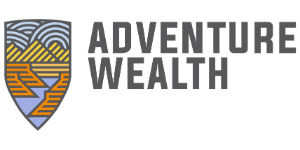While making a lot of money as an MD provides many advantages, it does bring some disadvantages when it comes to cashflow, investment opportunities and taxes.
If you’re already an Accenture MD, you definitely won’t be able to participate in Roth IRAs or tax-deferred IRAs because of your high income. However, there are some opportunities you still have access to.
We’ll review these various options and discuss how they can help you today.
1. Nondeductible IRA
When you’re over the income maximums for IRAs, most people think you’ve lost all ability to contribute. However, that’s not true because you can use a nondeductible IRA.
The nondeductible IRA allows you to contribute to an IRA with after-tax money, but all growth is tax-deferred.
There aren’t any income limitations on this account, and while they’re not as valuable as an IRA or Roth IRA, the tax-deferred growth is still an advantage.
Essentially, it’s like a Roth IRA in that you don’t get a tax deferral, and your contributions aren’t taxed when you take the money out, then it’s like an IRA because distributions of earnings are taxed as income.
The contribution limits are the same as those for an IRA, which is $6,000 (with a $1,000 catch up after 50) per income earner in 2020.
If you contributed $12,000 in two years, which grew to $100k in 21 years, your $12,000 contribution is tax-free, but you would pay income tax on the remaining $88,000.
But, you can also do a Roth conversion on this account and make the whole thing a Roth IRA!
You’ll pay income tax on the earnings when you convert, but not on the contribution amount. If you do the conversion, you’ve successfully funded a Roth IRA account.
This starts getting more technical based on your other IRA accounts, so you should work with a professional to make sure you complete it correctly.
2. After-tax 401(k) contributions
Another advantageous account you can contribute to is the Accenture after-tax 401(k) contribution. You can contribute an additional $15,000 per plan year, on top of your regular 401(k) contributions.
This is different from your regular tax-deferred 401(k) contribution or Roth 401(k) contribution.
These contributions are similar to the nondeductible IRA as you’re allowed to contribute after-tax money into this account, which can then grow tax-free.
Like the nondeductible IRA conversion, there’s also an option to complete an in-service Roth conversion with this account.
You really should talk to a professional and your benefits provider before jumping into this as there’s a huge danger of messing these up and owing a lot of money in taxes.
3. Health Savings Account Contributions
Another great option for high-income individuals is to use a Health Savings Account (HSA). You’re only eligible for an HSA account if you’re in a high deductible health care plan.
HSA contributions are before tax, which lowers your high tax bill, allows your money to grow tax-free, and you can reimburse any qualified health expenses tax-free.
This is the only “triple-tax advantaged” account, and many people use it as an investment vehicle similar to an IRA.
The maximum contribution amount in 2021 is $3,600 for an individual and $7,200 for family.
Contributions build in the account each year; it’s not a “use it or lose it” situation like the flexible spending account (FSA), and most accounts allow you to invest in the stock market.
If you never reimburse yourself for health expenses and instead save your money, it becomes similar to an IRA because, at age 65, you can spend the money without penalty.
Just like the IRA though, money you take out after 65 will be taxed as income.
Of course, you can also continue using the HSA money after you retire for tax-free qualified health expense reimbursements.
Get the most out of your HSA by contributing through Accenture, which allows you to skip the payroll tax. If you contribute cash, you defer income taxes, but you don’t get the advantage of not paying payroll tax.
Additionally, Accenture contributes $500 to your HSA for a single person and $1,000 if you cover more than one person on your plan.
4. Donor-Advised Fund (DAF)
Another great vehicle to take advantage of while you’re in your high-earning years is the donor-advised fund (DAF).
This is a fund you can set up with one of the big investment companies that essentially allows you to build your own charitable foundation.
Once you set up a DAF, your contributions are treated the same way as a qualified 501(c)(3) donation, meaning you can deduct them from your taxes if you itemize.
Even though you can deduct the contribution in the year you move the money to the DAF, you don’t have to give the money that year.
This opens up some additional strategies that you can’t use without the help of a DAF.
One of these strategies is to bunch your charitable contributions into a DAF in your high-income years so you can lower your tax bill.
Maybe you could plan to make a large donation to your DAF the year your MD grant exercises, when you could make over $1 million.
This would allow you to build up your giving fund, maximize the deduction, and then have a huge pot of money to give away later.
It doesn’t have to be funded with cash either as you can donate appreciated stock and get the full value of the stock as a donation.
Think about that Accenture stock in your ESPP that you purchased for $5,000 that’s now worth $10,000.
If you sold the stock, you’d have to pay capital gains taxes on the $5,000 gain. However, if you donated the stock directly, you avoid paying the capital gains taxes, and you can deduct the full $10,000.
As you can see, there are still options available to you as a high-income earner. You should consider adding these investment opportunities into your financial plan.

